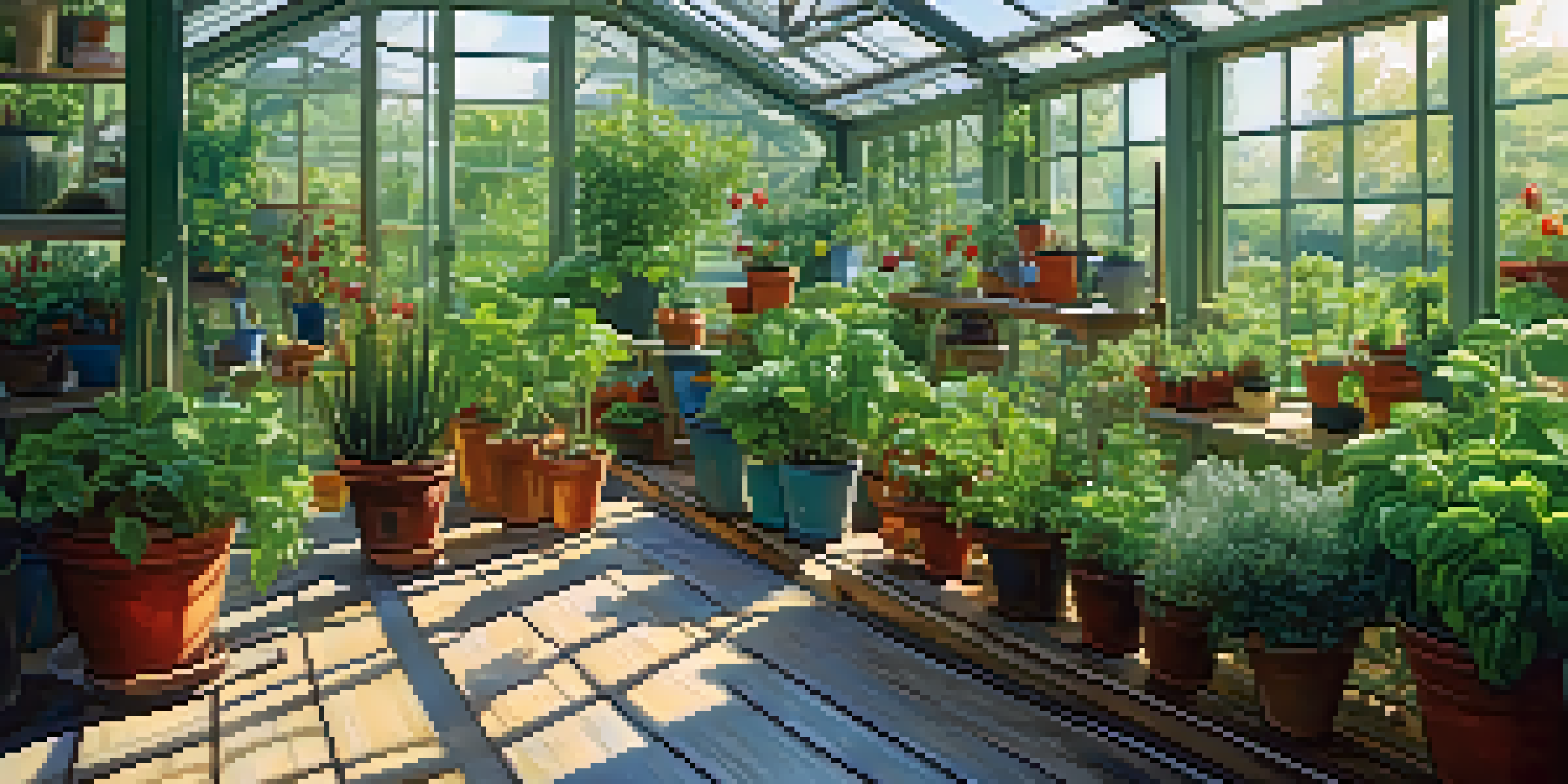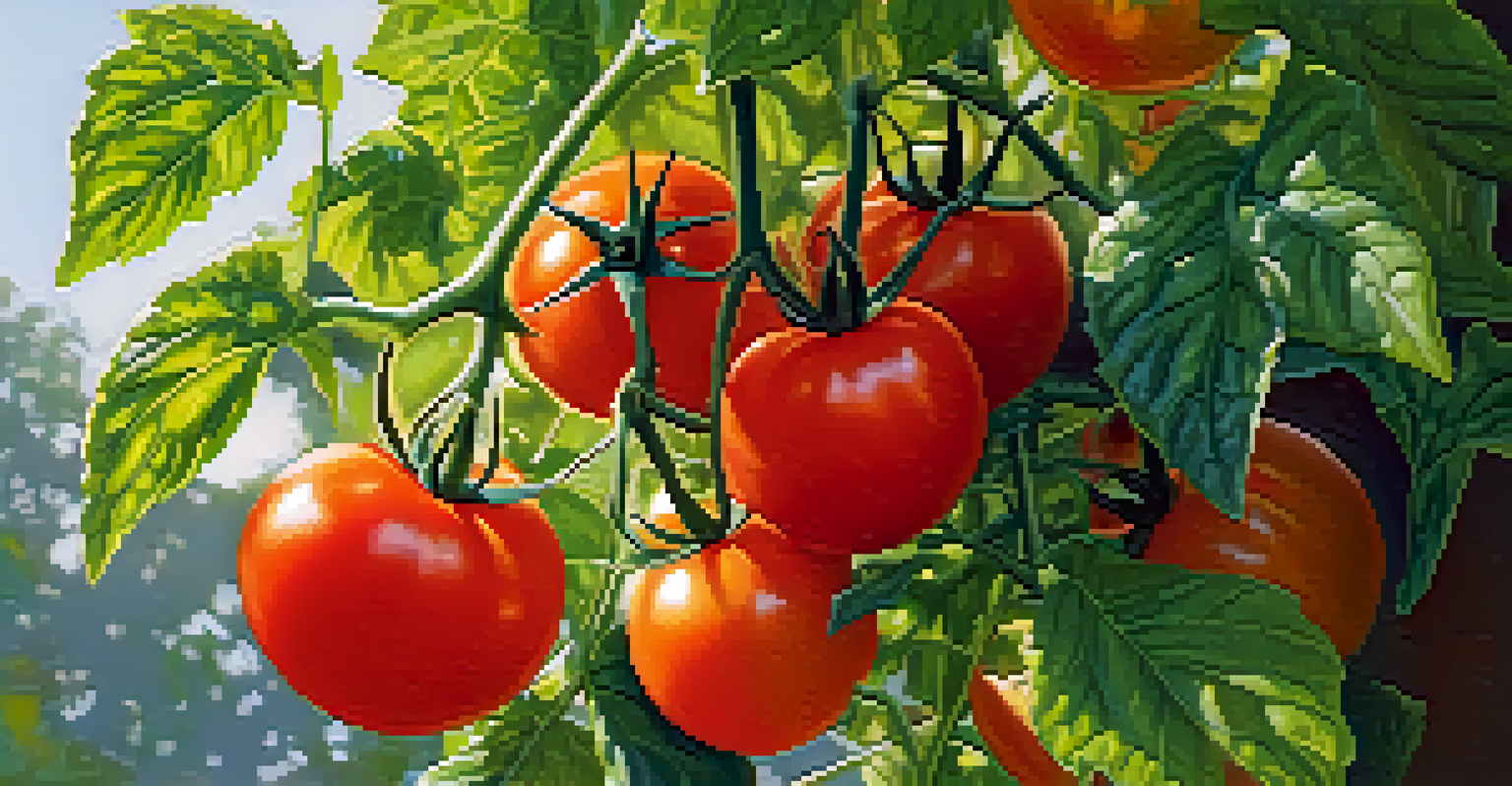Choosing the Best Plants for Year-Round Greenhouse Growth

Understanding Your Greenhouse Environment
Before selecting plants, it’s crucial to understand your greenhouse's environment. Factors like temperature, humidity, and light levels can greatly impact plant growth. For instance, if your greenhouse tends to get warm during the day, you might want to choose plants that thrive in warmer conditions.
The joy of gardening is a seed once sown that never dies.
Additionally, consider how much natural light your greenhouse receives. If it's bright and sunny, you can opt for light-loving plants, while shadier environments might require plants that tolerate less light.
By comprehending these environmental factors, you can make informed decisions about which plants are most likely to flourish in your greenhouse, ensuring a lush, green space year-round.
Selecting the Right Plant Types
Not all plants are created equal when it comes to greenhouse growth. It's essential to choose varieties that suit your climate and space. For instance, herbs like basil and parsley are great for smaller spaces, while larger plants like tomatoes and peppers need more room to grow.

You might also want to consider a mix of annuals and perennials. Annuals can provide quick bursts of color and yield within a season, while perennials come back year after year, offering sustainability and ongoing productivity.
Know Your Greenhouse Environment
Understanding temperature, humidity, and light levels is essential for selecting the right plants that will thrive in your greenhouse.
By selecting a diverse range of plant types, you can create a dynamic and productive greenhouse that offers a variety of visual interest and harvests throughout the year.
Understanding Plant Growth Cycles
Every plant has its own growth cycle, which dictates when it thrives and when it rests. Some plants, like lettuce, grow quickly and can be harvested in a matter of weeks, while others, like fruit trees, may take years before yielding produce.
To plant a garden is to believe in tomorrow.
Understanding these cycles can help you plan your greenhouse’s planting schedule effectively. For example, if you plant quick-growing crops in succession, you can maximize your yields over the seasons.
By aligning your planting strategy with the natural growth cycles of your chosen plants, you can ensure a steady supply of fresh produce and vibrant foliage year-round.
Choosing Companion Plants for Success
Companion planting is a fantastic strategy to enhance growth and deter pests. Some plants naturally support each other, like tomatoes and basil, which not only thrive together but also improve each other's flavor and growth.
Incorporating companion plants can also help create a more balanced ecosystem in your greenhouse. For example, planting marigolds can deter harmful pests while attracting beneficial insects.
Choose Diverse Plant Types
Selecting a mix of annuals and perennials can create a dynamic greenhouse with continuous visual interest and harvests throughout the year.
By thoughtfully selecting companion plants, you can cultivate a healthier greenhouse environment that promotes growth and minimizes pest issues.
Pest and Disease Resistance in Plants
When choosing plants for your greenhouse, consider their resistance to pests and diseases. Some plants are naturally more resilient, making them easier to care for and maintain.
For example, certain varieties of peppers and cucumbers are bred specifically for pest resistance, reducing the need for chemical interventions and allowing for a more organic approach.
By prioritizing pest-resistant plants, you can cultivate a healthier greenhouse and spend less time battling unwanted invaders.
Seasonal Planting Strategies for Year-Round Growth
To achieve year-round growth, it's vital to implement seasonal planting strategies. This involves rotating your crops and planting new seeds as others finish their growth cycles.
For instance, you can start with cool-season crops like spinach and kale in the early months and transition to warm-season crops like peppers and eggplants as the weather warms up.
Implement Seasonal Strategies
Rotating crops and planning your planting schedule around the seasons ensures a continuous harvest and vibrant greenhouse year-round.
By planning your planting schedule around the seasons, you can ensure a continuous harvest and vibrant greenhouse throughout the year.
Using Technology for Optimal Growth Conditions
In today's world, technology can play a significant role in greenhouse management. Tools like automated watering systems, climate monitors, and grow lights can help create optimal conditions for your plants.
For instance, using a temperature and humidity sensor can alert you when conditions are not ideal, allowing you to adjust accordingly. This proactive approach can lead to healthier plants and higher yields.

Embracing technology in your greenhouse can make your gardening experience more efficient and enjoyable while ensuring your plants thrive year-round.
Maintaining a Healthy Greenhouse Ecosystem
A healthy greenhouse ecosystem is the foundation of successful year-round growth. Regular maintenance, including cleaning, pest management, and soil health checks, is essential.
Pay attention to the soil quality, as it provides nutrients for your plants. Regularly testing and amending the soil can lead to better plant growth and fewer diseases.
By maintaining a healthy ecosystem, you not only support your plants but also create a thriving space that invites biodiversity and resilience, ensuring your greenhouse remains a vibrant sanctuary all year long.